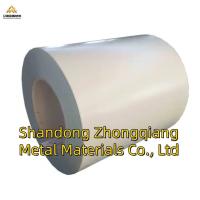Customized Reticulated Plates: Meeting Your Personalized Needs
In an era where individuality and uniqueness are highly prized,
customized reticulated plates have emerged as a versatile solution,
offering a perfect blend of functionality and personalization.
These plates, with their intricate network of interconnected
structures, can be tailored to meet a wide range of specific
requirements, making them an ideal choice for various industries
and applications.
The Allure of Customization
The key advantage of customized reticulated plates lies in their
ability to be designed according to individual preferences and
needs. Whether it's a specific size, shape, material, or pattern,
manufacturers can work closely with clients to create reticulated
plates that are truly one-of-a-kind. This level of customization
allows for greater flexibility and creativity, enabling users to
bring their unique visions to life.
For instance, in the field of architecture and interior design,
customized reticulated plates can be used to create stunning
decorative elements. They can be crafted into intricate wall
panels, room dividers, or ceiling features, adding a touch of
elegance and sophistication to any space. By choosing the right
material, color, and design, architects and designers can create a
cohesive and personalized look that reflects the client's style and
personality.
In the automotive and aerospace industries, customized reticulated
plates play a crucial role in enhancing performance and
functionality. These plates can be designed to meet specific
weight, strength, and durability requirements, making them suitable
for applications such as engine components, structural parts, and
heat exchangers. By optimizing the design of the reticulated
plates, engineers can improve the efficiency and reliability of
vehicles and aircraft, while also reducing costs.
Applications in Diverse Industries
The versatility of customized reticulated plates makes them
suitable for a wide range of industries and applications. Here are
some examples of how they are being used:
- 1.Medical and Healthcare: In the medical field, customized reticulated plates are used in
orthopedic implants, dental prosthetics, and tissue engineering.
These plates can be designed to match the patient's anatomy,
providing a better fit and reducing the risk of complications. They
can also be made from biocompatible materials, ensuring long-term
safety and functionality.
- 2.Electronics and Semiconductors: Customized reticulated plates are used in the electronics industry
for heat dissipation, shielding, and structural support. These
plates can be designed to meet specific thermal and electrical
requirements, ensuring the optimal performance of electronic
devices. They can also be made from lightweight and high-strength
materials, reducing the overall weight and size of the devices.
- 3.Renewable Energy: In the renewable energy sector, customized reticulated plates are
used in solar panels, wind turbines, and energy storage systems.
These plates can be designed to maximize the efficiency of energy
conversion and storage, while also reducing the cost and
environmental impact of renewable energy technologies.
The Customization Process
The process of customizing reticulated plates typically involves
the following steps:
- 1.Design Consultation: The first step is to have a detailed design consultation with the
manufacturer. During this stage, the client's requirements,
specifications, and preferences are discussed, and a preliminary
design is created.
- 2.3D Modeling and Prototyping: Once the design is finalized, a 3D model of the reticulated plate
is created using computer-aided design (CAD) software. This allows
the client to visualize the design and make any necessary
adjustments before production. A prototype may also be produced to
test the functionality and performance of the plate.
- 3.Material Selection: The choice of material is crucial in determining the properties and
performance of the reticulated plate. The manufacturer will work
with the client to select the most suitable material based on the
application requirements, budget, and aesthetic preferences.
- 4.Production and Manufacturing: After the design, material, and prototype have been approved, the
reticulated plate is produced using advanced manufacturing
techniques such as 3D printing, CNC machining, or injection
molding. The manufacturing process is carefully monitored to ensure
the quality and accuracy of the plate.
- 5.Quality Control and Testing: Before the reticulated plate is delivered to the client, it
undergoes a series of quality control and testing procedures to
ensure that it meets the specified requirements and standards. This
may include dimensional inspections, material testing, and
performance testing.
Conclusion
Customized reticulated plates offer a unique and innovative
solution for meeting personalized needs in various industries and
applications. With their ability to be tailored to specific
requirements, these plates provide greater flexibility, creativity,
and functionality. Whether it's for architectural design,
automotive engineering, medical applications, or renewable energy,
customized reticulated plates are revolutionizing the way we design
and manufacture products. As technology continues to advance, we
can expect to see even more exciting applications and possibilities
for customized reticulated plates in the future.









